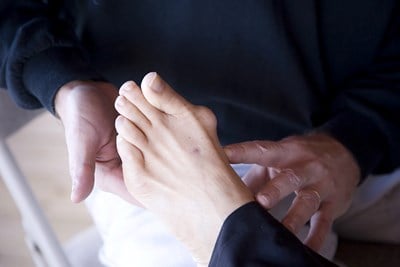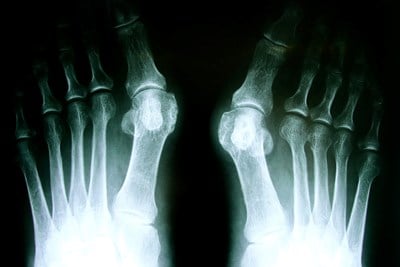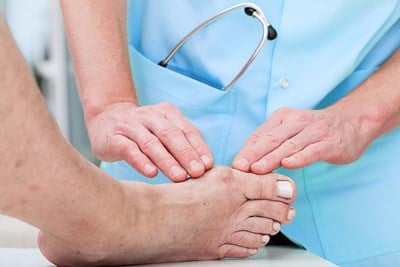When your big toe pushes against your second toe, the joint can grow bigger and stick out. The bony bump that forms on the joint or at the base of your big toe is a bunion. Bunions can also develop on the joints of your other toes, although they will be smaller in size. Here is a look at what causes bunions.
Causes
When pressure from bearing and shifting your weight falls unevenly on the tendons and joints in your feet, bunions develop. The imbalance of pressure causes your big toe to be unstable—this instability causes parts of your joint to form into a bony bump.
Footwear that doesn’t fit properly can contribute to the occurrence of bunions. Additionally, wearing shoes that are too tight or don’t fit can also make an existing bunion worse. Shoes that are too tight can rub against your big toe joint or squeeze your feet, forcing your big toe into a bent position. This stretches your toe, puts pressure on the surrounding nerves, and contributes to bunion pain.
The following types of arthritis can also cause bunions:
- Rheumatoid arthritis: This type of arthritis can cause pain in your joints because your immune system attacks the joint lining.
- Gout: This type of arthritis commonly affects your big toe.
- Psoriatic arthritis: This type of arthritis is associated with psoriasis, a skin condition.
Other causes of bunions can include:
- Injuries to your foot
- Congenital birth defects
Risk Factors
The following factors can increase your risk of bunions:
- High heels: Wearing high heel can force your toes into the front of your shoes and cramp your toes. High heels also place a lot of strain on your joints because they push most of your body weight forward onto the front of your foot.
- Genetics: You have an increased risk of developing bunions if other family members also have them.
- Gender: Women are more likely than men to experience bunions. Some studies have found that bunions occur almost 10 times more often in women.
- Other conditions: Conditions that can increase your chances of developing bunions include neuromuscular conditions, such as polio or cerebral palsy, and connective tissue disorders, such as Marfan syndrome. People with these conditions are at a higher risk of developing bunions because they’re associated with loose ligaments, flexible joints, and low muscle tone.
- Limb length: If you have one leg that’s shorter than the other, you have an increased risk of bunions. The longer leg will develop the bunion because the limb will overpronate—this risk, however, is less common.



